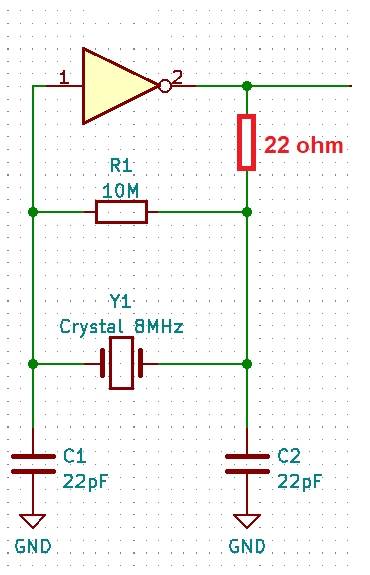I want to build an oscillator and have an 8 MHz crystal laying around, so I looked around to find a circuit to make an oscillator with it. I found this schematic:
However, I do not have a 4069 laying around, so I replaced it with a 7400 with one input pin bound to +5 V. My (naive?) brain checks the switching speed of the 7400 and max. 22 ns should be well in range of 8 MHz.
Still, the circuit does nothing. So I have two questions:
- How important is it that I use a 4069UB ?
- Is there another way of making an 8 MHz oscillator with the crystal and some 74xx logic gates?


